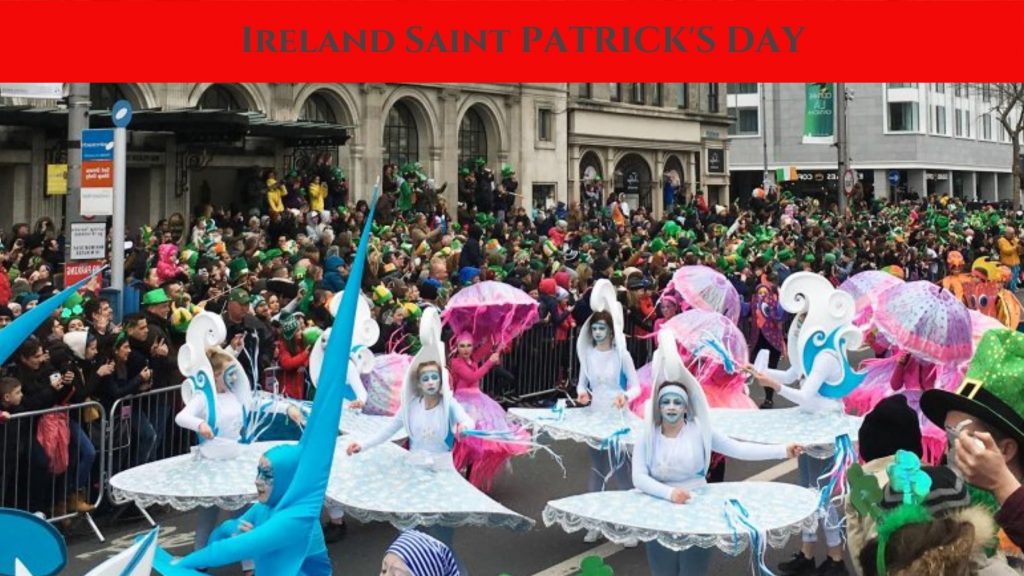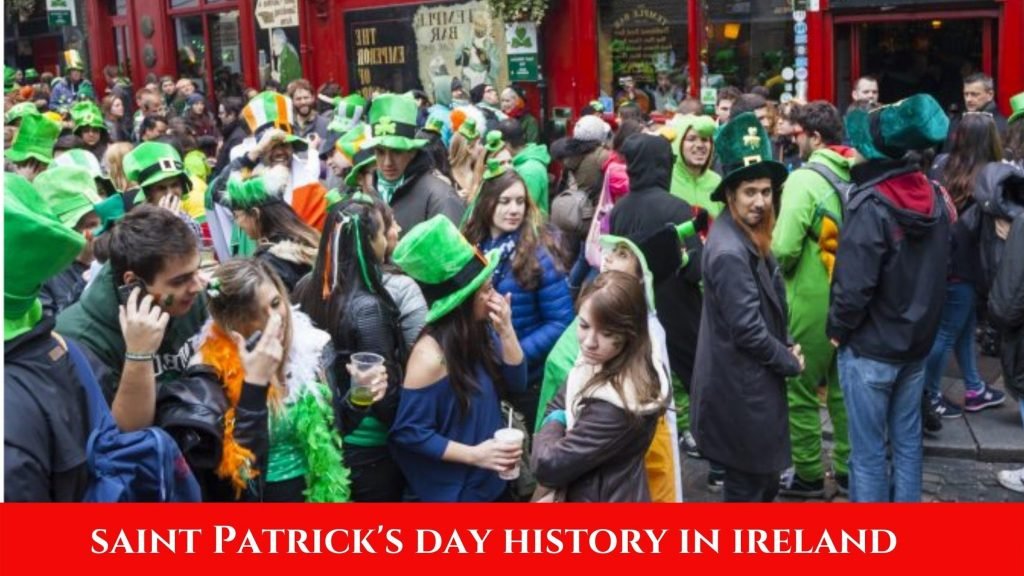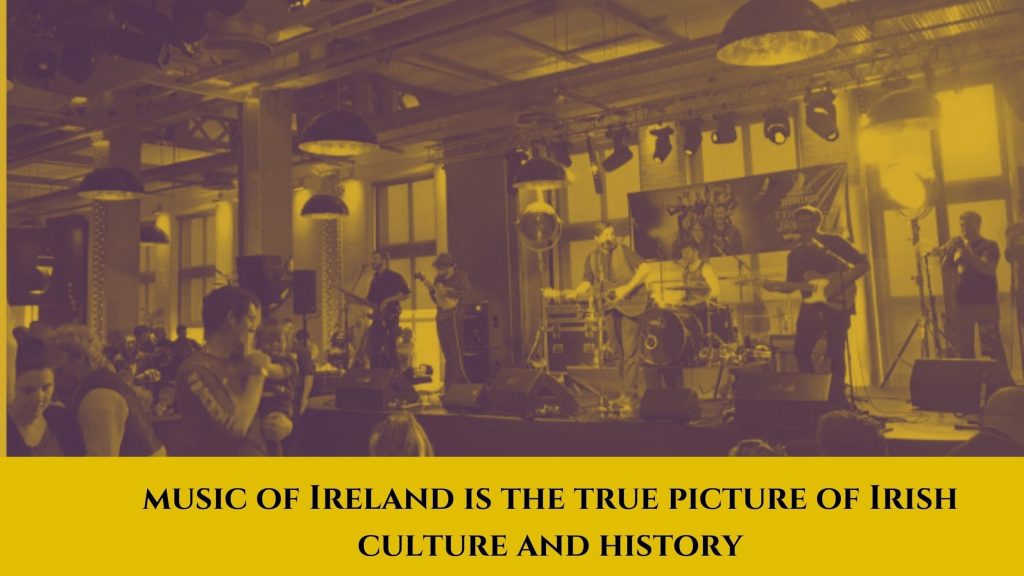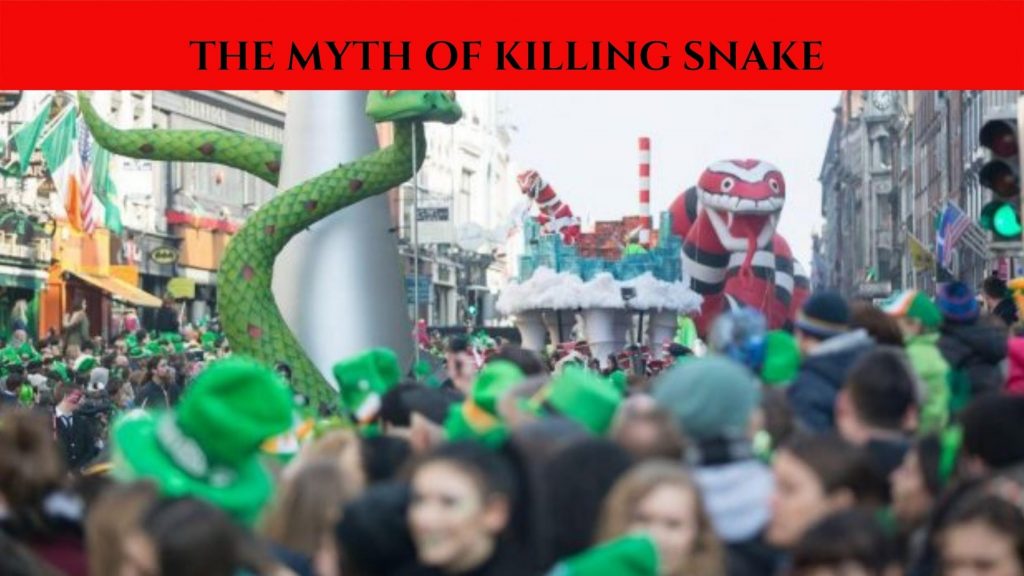A brief history of Ireland St. Patrick’s Day
St. Patrick’s Day is celebrated on March 17, the fifth century anniversary of his death. Who, according to folklore, introduced Christianity to the Irish and drove the snakes out of the island. The Irish celebrate this day as a religious holiday for over 1,000 years. On St. Patrick’s Day, the coming Christian season of Lent, Irish families traditionally attend church in the morning and celebrate in the afternoon. Restrictions against the consumption of meat have been waived and people dance, drink and dine on the traditional diet of Irish bacon and cabbage.

“Paddy’s day,” as the locals calls it, is actually a religious holiday in Ireland, but not as it once was. The beer company’s campaigns made it one – eighth of a church holiday in the 1980s – but today is still a day many locals enjoy with their families. It is common to have beer with your children at most rice day celebrations such as the famous Guinness Storehouse’s three-day St. Patrick’s Day Festival. I saw a lot of kids and kids at St. Paddy’s storehouse enjoying live music with their parents – kids are part of the fun.
What to do and what not to do? On St. Patrick’s Day in Ireland

There is a lot to do in Ireland. From Flatter Stone Kiss to Guinness Factory, Ireland offers visitors a wide range of historical attractions, beautiful landscapes and Irish brewed drinks. Come March 17, Ireland’s to-do list focuses on one event – St. Patrick’s Day. For many American tourists, celebrating St. Patrick’s Day in Ireland is one of the ultimate bucket list items and the absolute best time to visit Dublin. However, some Americans think the event is a bit more, now trying to navigate the new city, which is now crowded and full of drunken people. In addition, American tourists who have no general knowledge of Ireland and believe Irish stereotypes to be true often experience embarrassing interactions with locals. This guide reminds American tourists to celebrate St. Patrick’s Day in Ireland like locals, attend festivities and have fun, bucket inventory boosting memories.
Extend your stay in Ireland on St. Patrick’s Day
To get the full experience of celebrating St. Patrick’s Day in Ireland, tourists should plan to stay in Ireland for at least four days. This is because many Irish cities and towns began celebrating St. Patrick’s Day before March 17th. This year is no different. With car rental in Dublin, you have full access to all the festivities that best suit your needs. In Dublin, the festivities begin on Saturday, March 14th. For 4 days, the city celebrates with fun festivities, live music, 5K races and ‘Greening the City’, where Dublin’s most famous buildings glow with green lights. Cork, the second largest city in the Republic of Ireland, also hosts a 4-day festival that brings street performers, food vendors and musicians to the festival. In Northern Ireland, large cities such as Belfast and London / Derry also celebrate with events and parades. In addition, St. Patrick’s Cemetery Down Patrick hosts a festival with live entertainment and activities for the whole family.
Get up early and enjoy St. Patrick’s Day in Ireland
On March 17, the city and city will celebrate St. Patrick’s Day with a parade. Don’t miss this scene to celebrate St. Patrick’s Day in Ireland, especially in Dublin as a true Irish native. The capital city of Ireland hosts a spectacular parade that attracts over 500,000 people. Therefore, waking up early in the morning and being on the streets at 9am is the best place to watch the parade.
St. Patrick’s Day Traditions in Ireland
St. Patrick’s Day Parades is a popular holiday in Shamrock and Irish. From lapar chain to color green, find out what symbol we now associate with St. Patrick’s Day and learn about purely American inventions.
1 Shamrock is the rebirth of Spring
Shamrock, also known as “Simroy” by the Celts, is a sacred plant in ancient Ireland because it symbolizes spring rebirth. By the seventeenth century, the shamrock had become a symbol of emerging Irish nationalism. When the English began to seize Irish lands and legalize the use of the Irish language and the dominance of Catholics, many wore the shamrock as a symbol of their pride in their Irish heritage and their dissatisfaction with British rule.
2 Irish music is the source of delighting Irish culture and history

Music is often associated with St. Patrick’s Day and Irish culture in general. Since the ancient days of the Celts, music has always been an important part of Irish life. The Celts have an oral culture where religion, myth, and history are passed down from one generation to another through stories and songs.
After conquering English, and refusing to speak their own language, the Irish, like other depressed people, turned to music to help them remember important events and capture their heritage and history. . It often provokes emotions and calms people, music is forbidden by the English. During her reign, Queen Elizabeth I also decided to arrest all the artists and associates and hang them on the spot.
Today, traditional Irish bands such as The Irish, The Clancy Brothers, and Tommy Makeum are gaining popularity around the world. His music includes instruments that have been used for centuries, including the fiddle, the eulian pipe (a type of elaborate bagpipe), the tin whistle (actually a type of flute nickel-silver, brass, or aluminum), and the bodhran (an antique type traditionally used in warfare rather than classical).
3 Killing Snakes is a metaphor for eradicating pagan ideology in Ireland

During his mission in Ireland, St. Patrick once stood on a hill (now called Craig Patrick), and only one carpenter saw all the snakes of Ireland. Keep on the plane.
Of course, the island country is not always home to the snake. “Killing snakes” is really a metaphor for eradicating pagan ideology from Ireland and conquering Christianity. Within 200 years of Patrick’s arrival, Ireland was fully Christianized.
4 Irish people are food lovers
Every year, thousands of Irish Americans share a “traditional” meal of corned beef and cabbage with their loved ones on St. Patrick’s Day.
Although cabbage has long been an Irish food, corn beef is only associated with St. Patrick’s Day at the turn of the century.
Irish immigrants living in the Lower East Side of New York City have substituted corned beef for their traditional dish Irish bacon to save money. They learned about cheap alternatives from their Jewish neighbors.
5 Leprechaun
Leprechaun is the symbol of the Irish holiday. The original Irish name for folklore was “lobarasin”, meaning “accompanying small body”. Belief in Leprochun probably originated from the Celtic belief in fairies, young men and women, who could use their magical powers for good or evil services.
In Celtic folklore, leprechauns were the cranky spirits that caused other fairies’ shoes. Although only small figures in Celtic folklore, lepers were known for their tricks, which they often used to defend their multi-fiction treasures. May 13 has their own holiday for lectures but is also celebrated at St. Patrick’s, which has many